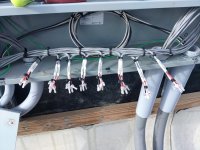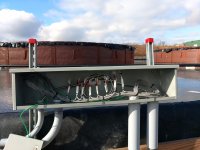Yep. Here's some picturesGas tight connection with butt splices? I am dubious.

Yep. Here's some picturesGas tight connection with butt splices? I am dubious.

"Hello, Mr. Dubious!"I am dubious.
Always ready to be told I'm doing it wrong! It's a habit I am familiar withI'm going to have to disagree with using a ferrule crimper on butt splices.
I think the NEC says that soldering cannot be the sole means of connection. But other than that, I can't think of a reason to do so.Is soldering out of the question?
id suggest non insul butt splices with separate heatshrink.I think the NEC says that soldering cannot be the sole means of connection. But other than that, I can't think of a reason to do so.
As it turns out, I was mistaken on the wire size. It is not #18, it is #14, and only 3 conductor. Don't think it is even shielded. I'll probably use butt splices after all, the kind with the heat shrink.



